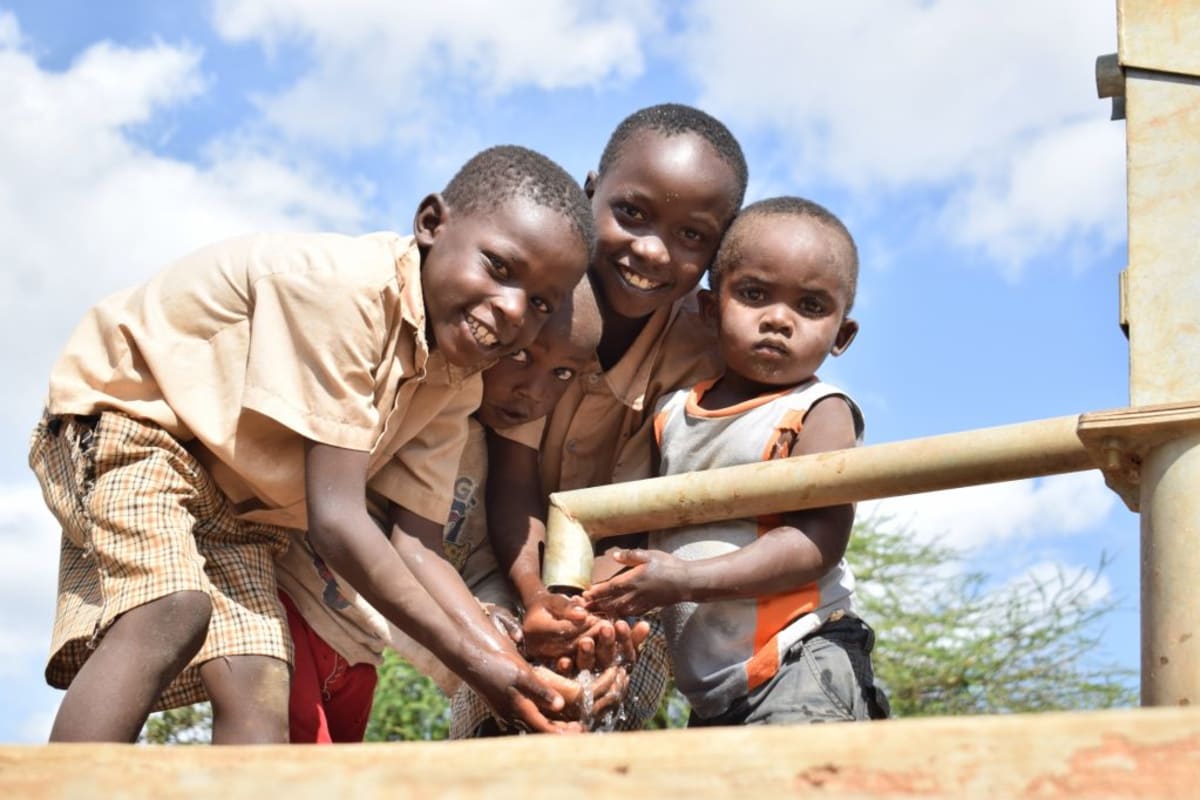Ndue Nguu Self-Help Group is comprised of several farmers from a large region in southeastern Kenya. They came together to address water and food scarcity in Kivandini Village and the surrounding communities through the sharing of resources and the building of new water and agriculture projects.
It is a peaceful and hilly rural area about five kilometers from Wote Town. Some 40 different households dot the landscape, with each having an average of five family members. Their homes are usually made of mud bricks and carved stones.
Most people depend on farming and make an average of 3,000 shillings ($30) per month. Children head out to school in the early morning after which their parents head straight to the farm.
Water
The majority of people in this area rely on water vendors. They're in the water business because the water source is far, and they have the motorbikes needed to cover the distance. They fill 20-liter containers with water from the Ndue Nguu River and sell them for 50 shillings ($0.50) each. Some people make the more than mile-long walk to the Ndue Nguu River for themselves.
The water fetched from Ndue Nguu is contaminated. This river is a sandy riverbed for most of the year. Community members have dug holes to access the water underground. Though the women who travel to the river are saving the money that would have been paid to vendors, they are not saving their time or their health.
"Water shortage has been a problem in our village. We fetch water from unsafe sources that are shared with livestock, resulting in a prevalence of different waterborne diseases," Mr. Bernard Mbithi said.
When delivered home, water is stored in larger 200-liter drums or an even larger tank. A couple households have been able to afford a large plastic tank that catches rainwater but must strictly ration water to avoid buying from vendors or traveling to the river themselves.
Hygiene and Sanitation
We visited with self-help group members to assess the level of hygiene and sanitation in their community. Mr. Mbithi and Mrs. Nzioka were both especially helpful in opening up their households, allowing us to take pictures of the situation they're living in. They shared that all households have a pit latrine, though most don't have doors for privacy. These latrines are a mix of permanent and semi-permanent structures, depending on the economic status of each household. Mud floors make these latrines difficult to clean.
We came across one or two handwashing stations, but there was no soap available.
More than 80% of the people here aren't doing any type of water treatment, not even boiling. This was a surprise since this area is so close to urban Wote Town.
Here’s what we’re going to do about it:
Training
To address gaps in hygiene and sanitation practices, training will be offered to self-help group members and any willing community members on three consecutive days. The members will learn about useful practices and tools to improve health, and then will be able to share those with their families and neighbors. Water transport, storage, and treatment methods will be taught, and handwashing will be a focus. Group members will learn how to make their own handwashing stations with everyday materials. To motivate participants, we must show the links between these activities and their health.
Sand Dam
Members of this group heard about us from a neighboring self-help group that we are working with. They then approached our field officer with a request for support, and after verifying that they had the relevant registration documents, they were put on our mandatory six-month probation period. During this time, locals are expected to seriously take development to heart and begin constructing hygiene facilities and gathering local materials to be used in the construction process. After that, we returned to verify their water challenges and their need for additional support. The evidence to warrant our support was sufficient, and the group was taken on board. Their first proposed site for a sand dam in Kivandini's Ndue Nguu River was also approved by our technical team because there is firm bedrock and wide banks. This particular sand dam is projected to be 52.7 meters long and 4.3 meters high.
This sand dam will be one of many construction projects to come in the next few years. We will spend a total of five years unified with this community to address the water shortage. More sand dams will be built to transform the environment. As the sand dams mature and build up more sand, the water tables will rise. Along with these sand dams, hand-dug wells will be installed to give locals a good, safe way to access that water.
With these projects, clean water will be brought closer to hundreds living in Kivandini and the surrounding villages.
As the sand dam construction begins, community members will start excavating their first adjacent hand-dug well (click here to see that well project).
This project is a part of our shared program with Africa Sand Dam Foundation (ASDF). Our team is pleased to provide the reports for this project (formatted and edited for readability) thanks to the hard work of our friends in Kenya.

 Sand Dam
Sand Dam
 Rehabilitation Project
Rehabilitation Project






























